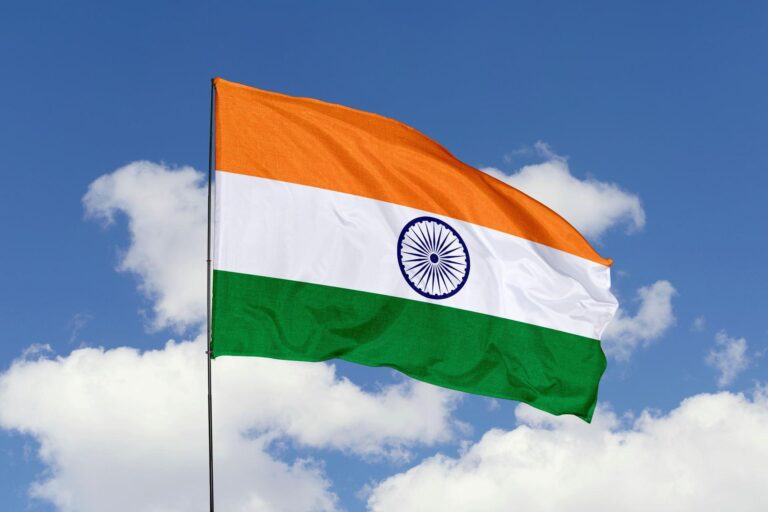IndiaS Inflation Rate Declines: A Positive Economic Indicator
In a surprising turn of events, india’s inflation rate for March has dropped to a lower-than-anticipated 3.34%,as reported by the Ministry of Statistics and Programme Implementation. This significant reduction comes at a time when many experts had forecasted an increase, indicating a trend towards price stabilization in the world’s fifth-largest economy. With food prices decreasing and essential goods showing signs of moderation, this encouraging growth could enhance consumer confidence and impact the Reserve Bank of India’s monetary policy decisions in the near future. As stakeholders react to these new figures, the effects on growth, investment, and daily life in India will be closely examined.
Economic Stability and growth Indicators in India
The recent inflation figure of 3.34% for March has taken economists and market analysts by surprise, highlighting a significant decline that reflects India’s dedication to maintaining economic stability. This drop can be attributed to various factors such as effective monetary policies and strong agricultural performance. The easing food prices have notably reduced pressure on the Consumer Price Index (CPI), creating a more favorable environment for both consumers and businesses alike. Key contributors to this downward trend include:
- Consistent Food prices: Enhanced agricultural yields coupled with improved supply chain efficiencies.
- Stabilized Energy Costs: Steady global oil markets along with strategic government interventions.
- Diligent Demand Management: Proactive measures from the Reserve Bank of india aimed at controlling demand.
This cooling inflation is an optimistic sign for India’s economic outlook, reinforcing investor trust while supporting long-term growth prospects within the contry. The government alongside its central bank can now prioritize fostering growth without immediate concerns over rampant inflation—creating an environment conducive to effective policymaking. Amid ongoing global economic challenges, strength reflected in local economic indicators serves as a beacon of hope that may lead to:
- A surge in Investments: Attracting both domestic capital inflows and also foreign direct investments.
- Create job Opportunities: Stimulating employment across various sectors.
- A Boost in Consumer Spending: Enhancing overall economic activity.
Understanding Factors Behind inflation Decline
The unexpected drop in March’s inflation rates can be linked to several interrelated factors shaping India’s current economic landscape.Firstly, there has been a substantial decrease in food prices—especially staples like vegetables and pulses—which considerably influences overall costs due to their ancient role as primary drivers of inflation rates. favorable monsoon conditions have not only led to increased agricultural output but also contributed directly to lower consumer prices at retail levels.
Additonally, another crucial factor is thediminution of fuel costs. although global oil prices have experienced fluctuations recently, their recent decline has provided much-needed relief for consumers and businesses alike; reduced transportation expenses typically translate into lower pricing pressures across other goods and services throughout the economy.
Moreover,demand-side dynamics influenced by slower consumer spending due largely to rising interest rates have created buffers against potential inflationary pressures. This interplay between improvements on supply sides combined with subdued demand may explain why we are witnessing such moderation within current inflation rates.
Strategies for Policymakers & Consumers Amidst Cooling Economy
The notable decrease observed within India’s inflation rates calls upon policymakers to adopt extensive strategies aimed at sustaining this positive momentum moving forward.
Key recommendations include:
- cautious Monitoring Of Commodity Prices: Regular tracking essential commodities will provide insights into pricing trends enabling preemptive actions against potential spikes ahead.
- Fiscal Responsibility : Maintaining balanced fiscal policies remains critical ensuring public debt management while stabilizing economies thus keeping inflations under control .
- Support For Agricultural Sector : Investing into agriculture technology along with enhancing supply chains leads towards improved production efficiency ultimately reducing food costs .
- Fiscal Responsibility : Maintaining balanced fiscal policies remains critical ensuring public debt management while stabilizing economies thus keeping inflations under control .
Consumers should also remain proactive about adapting their spending habits during this cooling economy; recommended strategies include :
- Prioritizing Essential purchases : Focusing primarily upon necessary goods/services helps mitigate impacts stemming from remaining inflated pressures . Â
- Price Comparison : Utilizing available technologies allows consumers access best deals promoting informed purchasing choices . Â
- > Strategic Saving Practices : encouraging savings mindsets cushions households against future fluctuations economically speaking. Â Â Â Â
Â
Conclusion: A Path Towards Economic Resilience
The recorded decline in india’s inflation rate downwards reaching 3% signifies surpassing market expectations providing renewed optimism regarding financial stability overall.
This reduction stands testament effectiveness behind implemented monetary policies alongside improvements made throughout supply chains offering reliefs benefiting both consumers/businesses alike.
As navigating through challenges posed globally continues ,this encouraging trend could pave pathways leading greater consumer confidence whilst fostering sustained growth economically speaking moving forward! Analysts will keep close tabs on forthcoming data gauging whether downward trajectories maintain themselves amidst evolving landscapes where policymakers/citizens alike seek out more stable financial environments ahead!




